 Hyundai Creta Electric: Things You Get With Each Of Its 6 Variants
Hyundai Creta Electric: Things You Get With Each Of Its 6 Variants
 Hyundai Creta Electric Reaches Dealerships, Check It Out In 9 Images!
Hyundai Creta Electric Reaches Dealerships, Check It Out In 9 Images!

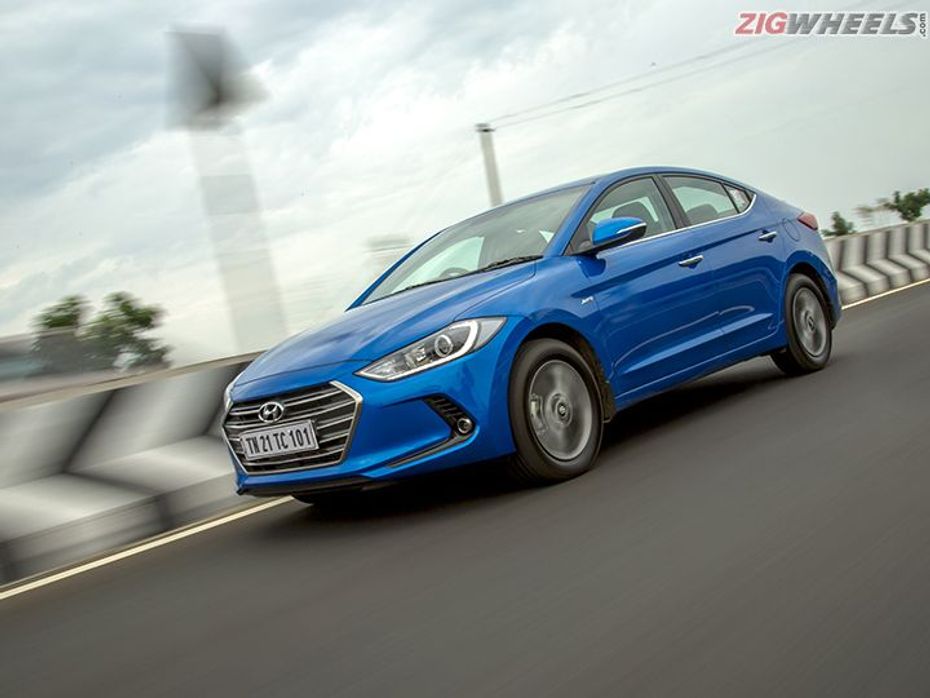
So, why would you bother launching a new model in a segment which isn’t growing much and there are already a bunch of established player protecting their turf? – was the obvious question I threw at Rakesh Srivastava - Sr. Vice President (Sales & Marketing) at Hyundai Motor India. Excited, he replied that Hyundai is very happy with its leadership position among cars under Rs 10 lakh, and, more recently, even in the Rs 10-15 lakh segment, with the popularity of the Hyundai Creta compact SUV.
Now the Korean auto major is look at capturing the Rs 15-20 lakh segment with the new Elantra, the car we are driving today, and the soon-to-be-launched Hyundai Tuscon SUV. Though currently the executive sedan segment is stagnant at about 1,000 units a month, we’re sure that the new Hyundai Elantra will add some excitement and might even increase the size of the segment marginally.
The fifth generation Hyundai Elantra had made quite an impact when it was launched in India about half a decade ago, becoming the top-seller in its segment for the first 12 months! The run continued till Toyota launched its global blockbuster, the new Corolla Altis, which knocked off the aging Elantra and grabbed a major chuck of the segment’s pie, while the Skoda Octavia, Volkswagen Jetta and, to a certain extent, even the Chevrolet Cruze grappled on the remaining bits. And, as you might have guessed, with the sixth generation car Elantra Hyundai hope to not just repeat history but boost the segment and increase it by a couple of hundred more units.
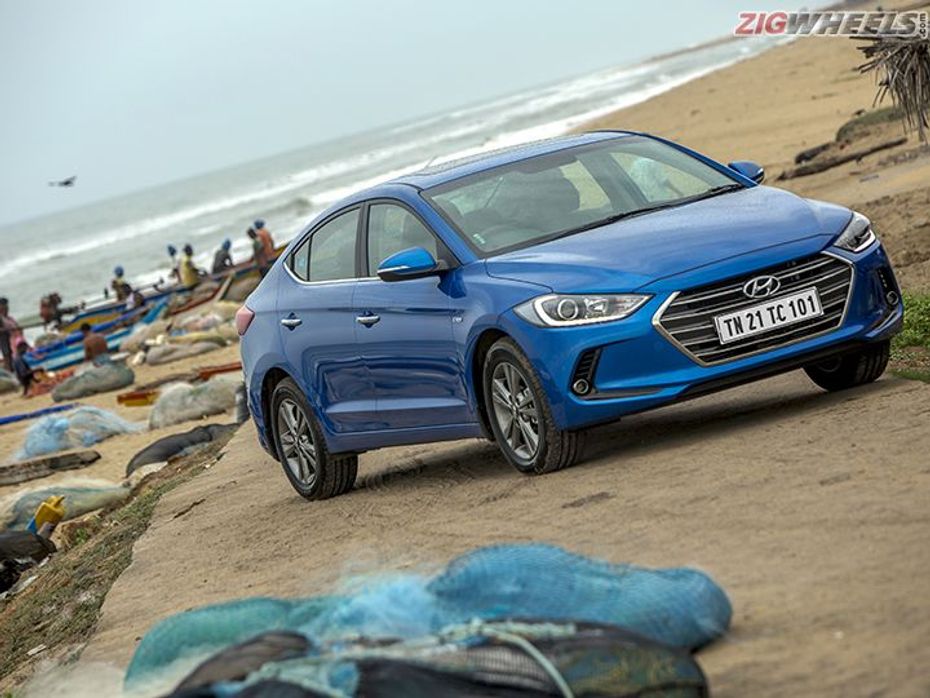
Design:
This, mind you, is not a facelift but a completely new car. And a lot has changed both on the skin and deep underneath. A far cry from the previous generation’s flowing lines and larger proportions, the new Elantra looks pretty understated. The designers have toned down the Korean flare to a more simplistic, understated appearance. The headlight, especially with the DRLs on, and the large, chrome hexagonal grill look very European. The proportions seem to be more compact now, mainly due to the drooping roof line and the way its C-pillars merge into the boot. This makes the profile very coupe-like and almost sporty and helps achieve an aerodynamic design.

Other bits that add to the character are the shark-fin antenna; a single, prominent shoulder line; and boomerang shaped housing for the projector fog-lamp which not only creates an air curtain around the wheels but also help in cooling the disc brakes. That said, the company hasn’t completely done away with bling. You do get a sleek chrome strip on the window-line and chrome finished door handles. Another aspect that will attract your attention is the new design of the LED tail lamp, that look spectacular in the dark. But we would’ve loved to see 17-inch alloy wheels offered as an option, apart from the standard 16-inch wheels which come with eco-friendly Silica tyres.
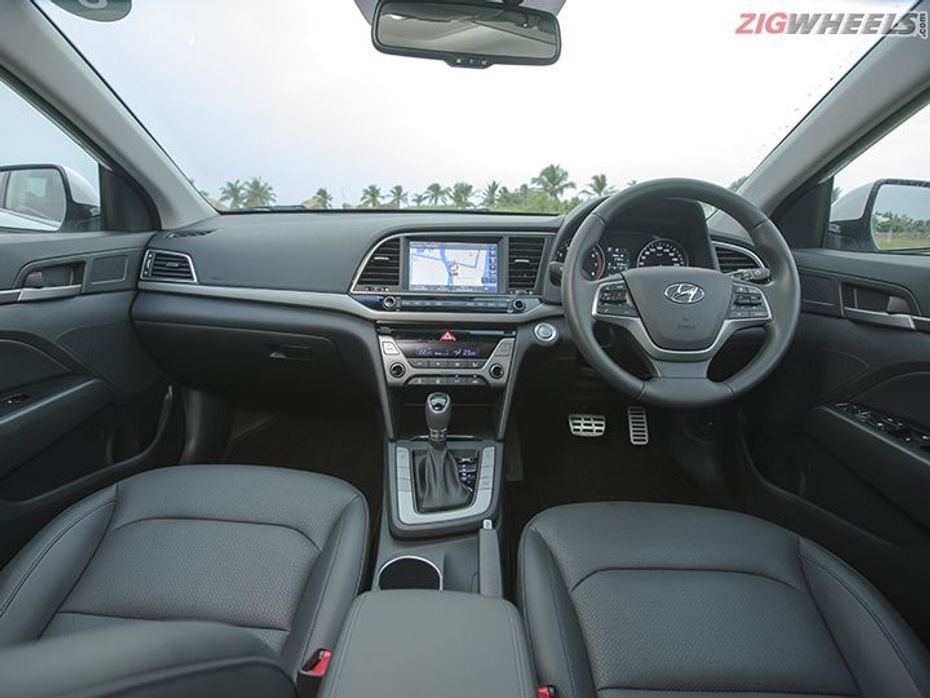
Interior:
Like on the outside, the cabin has also transformed in the new Elantra, catering to a more mature car buyer now. The multi-coloured beige-black-silver dashboard with the Fluidic design has been replaced with a classier all-black cabin and a single silver accent dividing the dashboard and a more conventional-looking centre console.
There’s soft touch plastic on the top half which gives it a more premium feel and the new 8-inch HD touchscreen is tilted slightly towards the driver. The touch interface has improved a couple of notches from the ones seen on the Hyundai Creta. Like the previous generation Elantra, the new car offers front ventilated seats – a segment first feature which still isn’t offered by others here.

This 4.5-metre long sedan has plenty of room, up front and even at the back. The seats are comfortable and soft, with good all-round bolstering. The driver’s seat in higher variants are electrically adjusted which help offer the ideal driving position. Unfortunately, the other front seat is devoid of this feature.
At the back, where the majority of the car owners will be seated in a car such like this, there’s no dearth of space and the Elantra can accommodate three with ease. Although you sit pretty low and the coupe-ish roof line reduces the head room and rear glass area, you won’t feel claustrophobic. Mainly because the rear window, in spite of being narrow, is quite long and there’s also a nice, big sunroof to let light in (sadly it’s only in the Automatic variants for now), and the top half of the car is draped in beige fabric in contrast to the back upholstery.
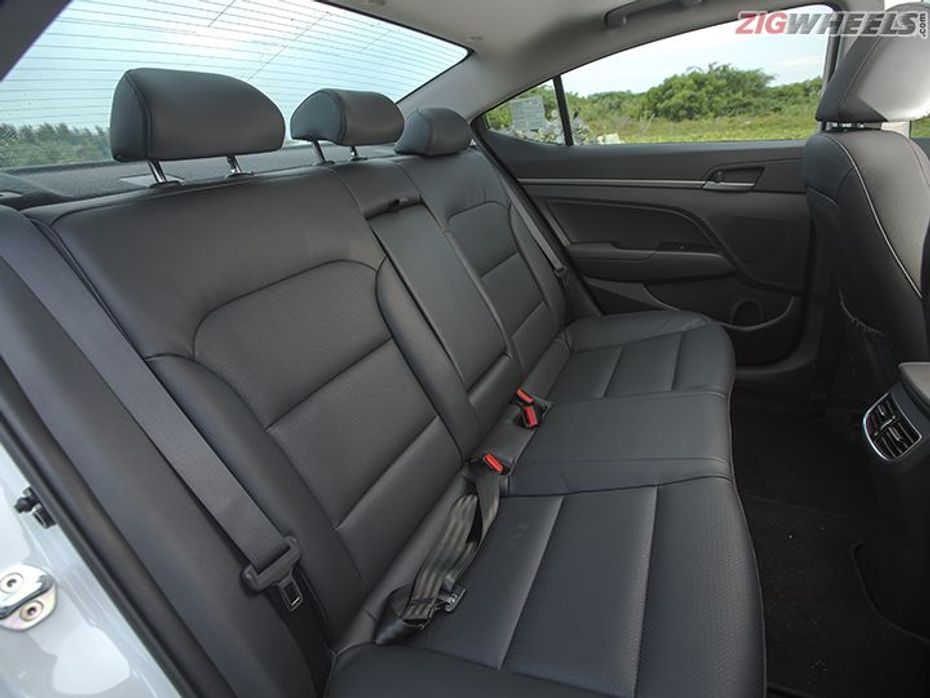
If there’s something that could have been improved, it is the under-thigh support of the rear seats. To make getting in and out of the car easier and to carve out more room the base of the seat seems to have been slightly reduced in size. Thankfully, there’s hardly any intrusion from the transmission tunnel on the floor of the car.
Right from the quality of plastic to the design and choice of colours the new Elantra will appeal to a whole new class of car buyers, poaching them from its European counterparts. The fit finish and quality has gone up, though one or two switches and buttons are a shade under its European rivals.
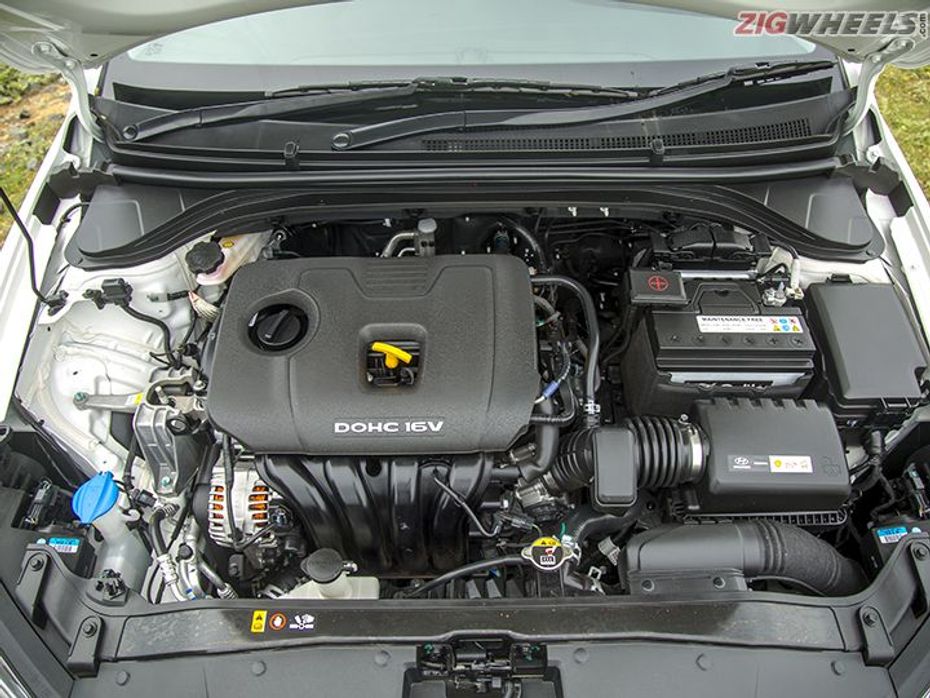
Engine:
The new Elantra caters to both gasoline lovers and those who prefer the more economical diesel fuel. Both come with the option of a manual 6-speed or the 6-speed automatic transmission.
First we drove the new 4-cylinder, 2.0-litre petrol motor which is the largest in its segment, but sadly not the most powerful here. The 152PS and 192Nm are put to good use due to its comparatively lighter weight and the linear power delivery. There’s no shortage of power, but unlike the sporty Skoda Octavia’s 180PS, 1.8-TSI the Elantra feels more relaxed and tuned for cruising effortlessly.

The level of NVH has been improved immensely by applying up to forty times more adhesive to seal-off panels. This is evident as in spite of having no insulation under the bonnet, you can hardly hear the 2.0-litre while idling, making it one of the most refined motors in its class.
Step on the gas and there’s no lag and the well-spaced automatic gearbox ensures that it briskly reaches the meaty mid-range. The gear ratios are well spaced and seem to be tuned perfectly for city use, and the motor, when on the boil, does have a nice note. The Elantra can comfortably reach and can maintain the 150kmph mark with ease, but beyond 4,000rpm it does tend to get audible within the cabin.
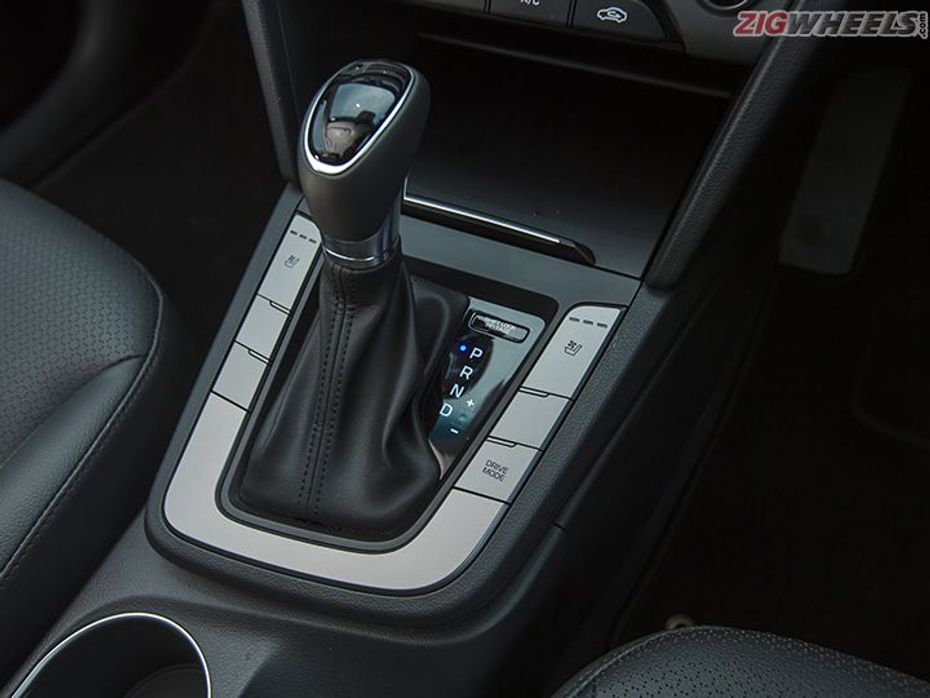
There are a couple of driving modes too -- Eco makes the accelerator sedated as it stretches every drop of the golden fuel. Switching to Sport mode makes the throttle more responsive, but border-lining toward being edgy. There are no steering mounted paddle-shifters, obviously, as it doesn’t gel well with the car’s tranquil character, but you do get the option of slotting the gear lever to “Manual” mode. This will allow you to hold on to each gear for a bit longer, but the system overrides sharp down-shifts. But the Elantra feels best when driven at relaxed city speeds, without being poked much and letting the AT go about its business seamlessly.
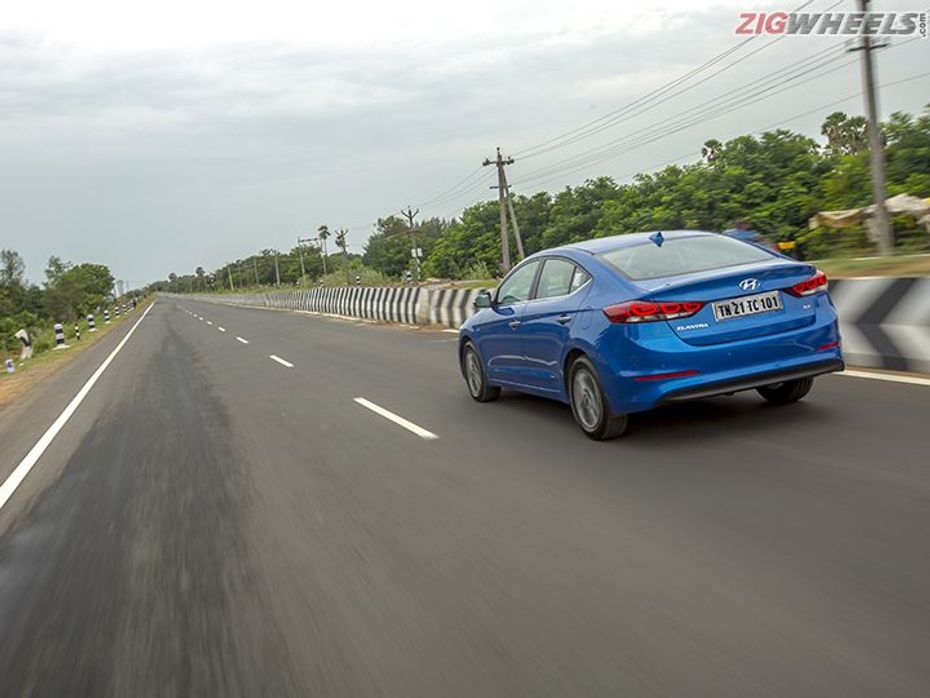
Then you also get the tried and tested 128PS, 1.6-litre diesel unit which used to power the outgoing car. Not much have changed here, and you get the usual no-nonsense diesel motor, which in its manual avatar returns a slightly improved 22.57kmpl fuel economy. This easily is one of the most refined diesel engines in its segment. The automatic version that we took on a short spin remain mostly unchanged. The gearbox irons out any lag and offers uninterrupted surge of power and without much probing maintains three digit speeds. And going by its history, the 1.6-litre is reliable, refined and efficient – delivering pretty much everything an Elantra owner would ask for.
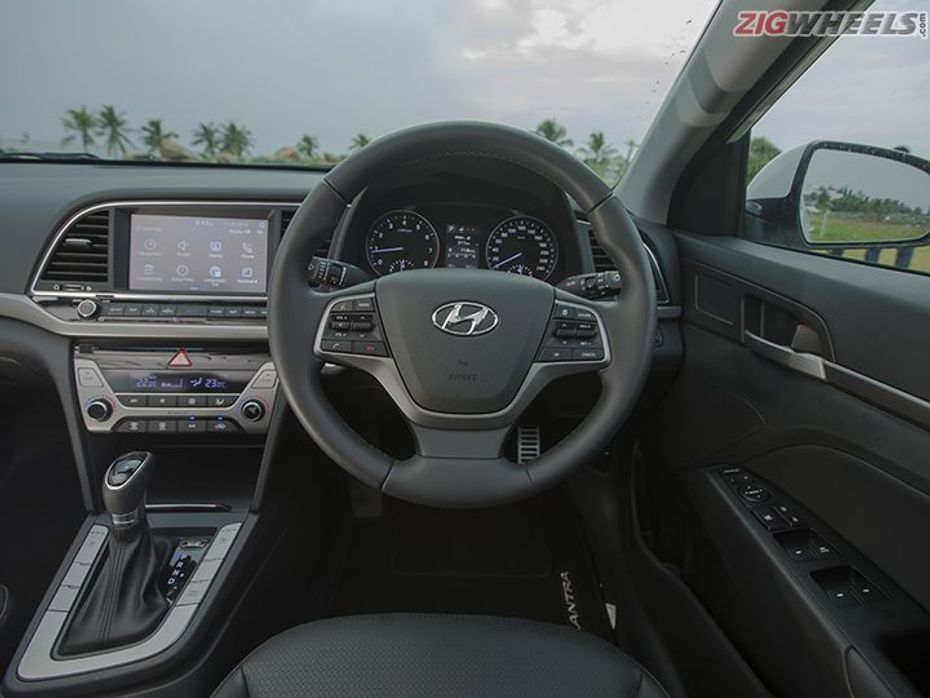
Features:
Hyundai has spoilt its car buyer by offering the best in class features for all its models across various segments. Apart from the sun-roof, ventilated front seats and 10-way electrically adjustable driver’s seat we mentioned above, the features list is breathtaking. So, we’ll just be mentioning some more of them here. Up front you get dual zone air-conditioning so the driver and co-passenger can tune the temperature individually. Obviously, there’re AC vents for the all-important rear seat occupants also, which did a great job even in the weather Chennai is known for.
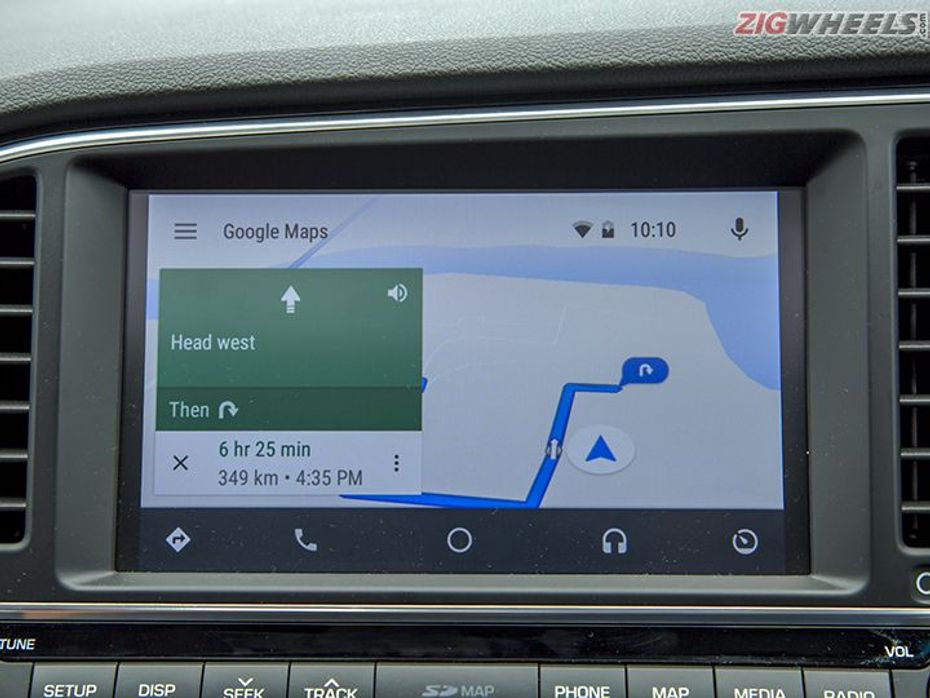
A new Arkamys music system is accompanied by six speakers and sounds quite nice, while the large screen infotainment system comes with Apple CarPlay and Android Auto connectivity, so that you can connect your smartphone with ease. Not to mention the usual satellite navigation system with voice recognition. There’s reverse parking sensors and camera which uses this screen as a display.
The driver’s information cluster offers a whole lot of data and now also includes distance to empty gauge, while the leather-wrapped steering, gear lever and seats feel more premium now.
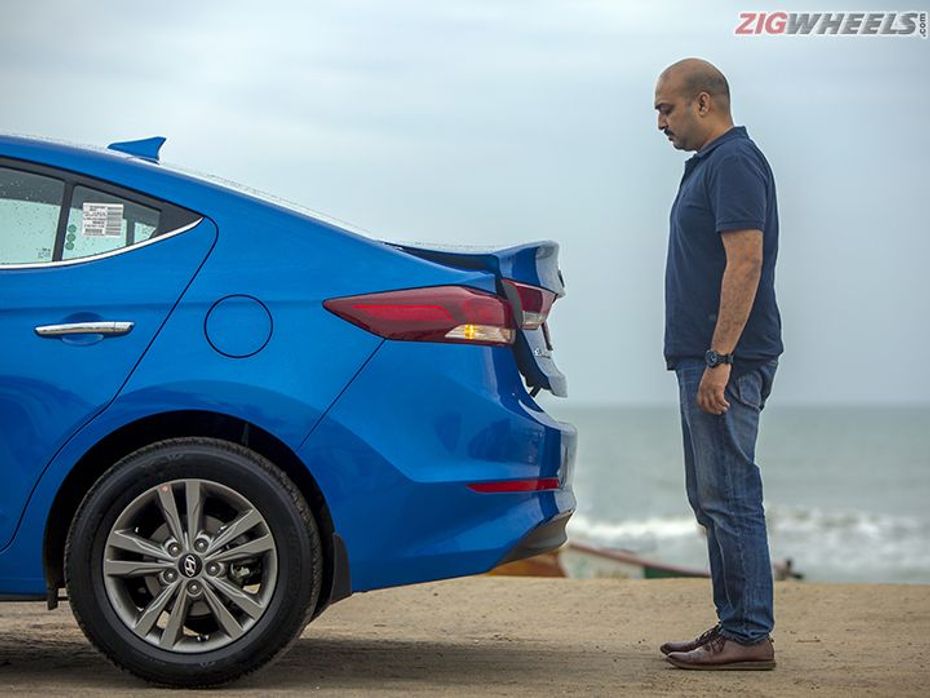
Another feature I must talk about is the Smart Trunk. Say, your hands are full with bags and you approach the rear of the Elantra with the car’s key in your pocket, the boot lid will pop open automatically in 3 seconds, giving you access to its 458-litre storage sapce. Smart!
Then there are small nuances which give a special experience. Like the door handles illuminate when you walk up to the car. Grab it and the doors unlocks. Get in and the wing mirrors unfold. Overall, the new Elantra give you a great ownership feeling with these small touches.
Coming to safety, the new Elantra gets an impressive six airbags (in higher variants), ABS and EBD, along with Electronic Stability Control (ESC) and Hill-Start Assist which prevents the car from rolling back on an inclined road. Now it not just uses more high tensile steel (AHSS) which helps in improving the rigidity of the body and, in turn, the car’s dynamics.
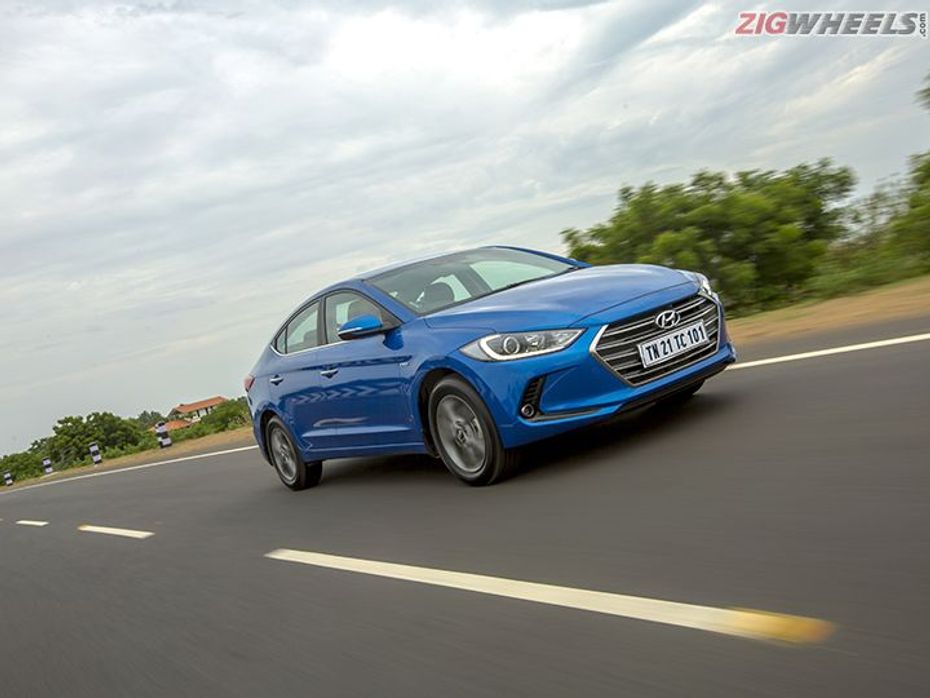
Ride and handling:
This brings us to one of the biggest improvements we experienced in the new Elantra – its ride. I spent a good hour on the back seat, most of it in amazement as my colleague driving the car did everything possible to make me come back to the empty front seat.
At low speeds the car gracefully absorbs bad roads and speed breakers unlike any of its predecessors. And as you go faster and faster over road undulations the new suspension setup and damping system ensures that the car car quickly settles back and doesn’t bob around like before. The newly introduced Vehicle Stability Management system further aids this cause. This is a big transformation and a step in the right direct by Hyundai India.
The steering is still light and helps while manoeuvring in the city or parking this 4.5-metre car. It does weigh up a bit as the car gathers speed but, being electrically assisted, it isn’t as communicative as some hydraulic steering setup. Apart from this we would have also liked some more bite and better feel from the brakes.
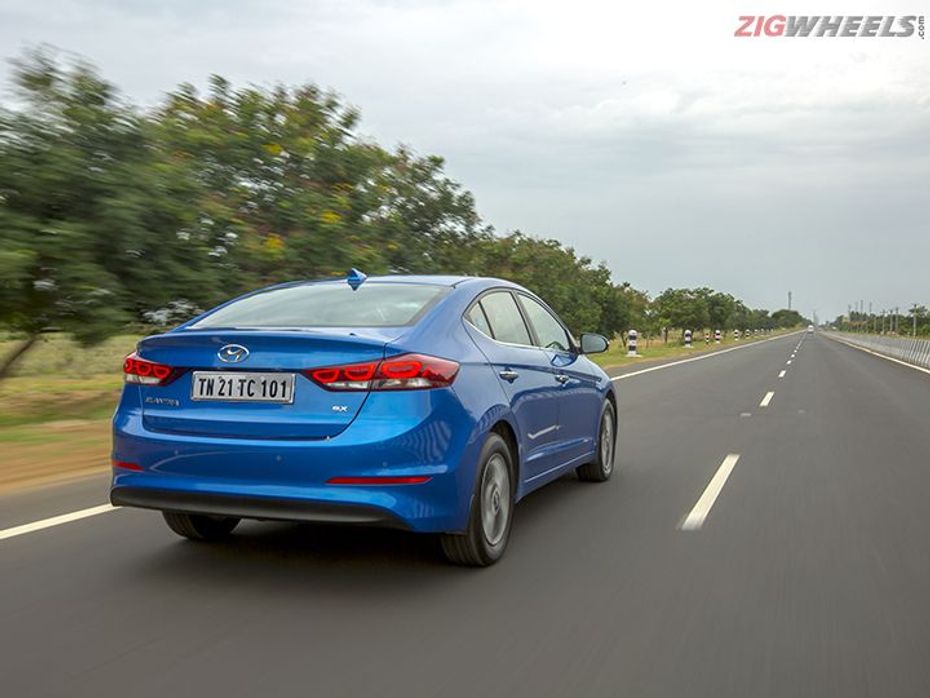
Price:
Finally, everything boils down to price. Hyundai has launched the Elantra at a compelling price, with petrol variants starting at Rs 12.99 lakh and diesel options beginning at Rs 14.79 lakh, ex-showroom Delhi. This makes the base variant Elantra almost Rs 80,000 cheaper than the Toyota Corolla and close to Rs 2.5 lakh less than Skoda Octavia. Even if you compare the top-end petrol automatics the Hyundai costs about Rs 50,000 less than the Corolla VL AT variant and undercuts the Octavia TSI AT by Rs 2.6 lakh.
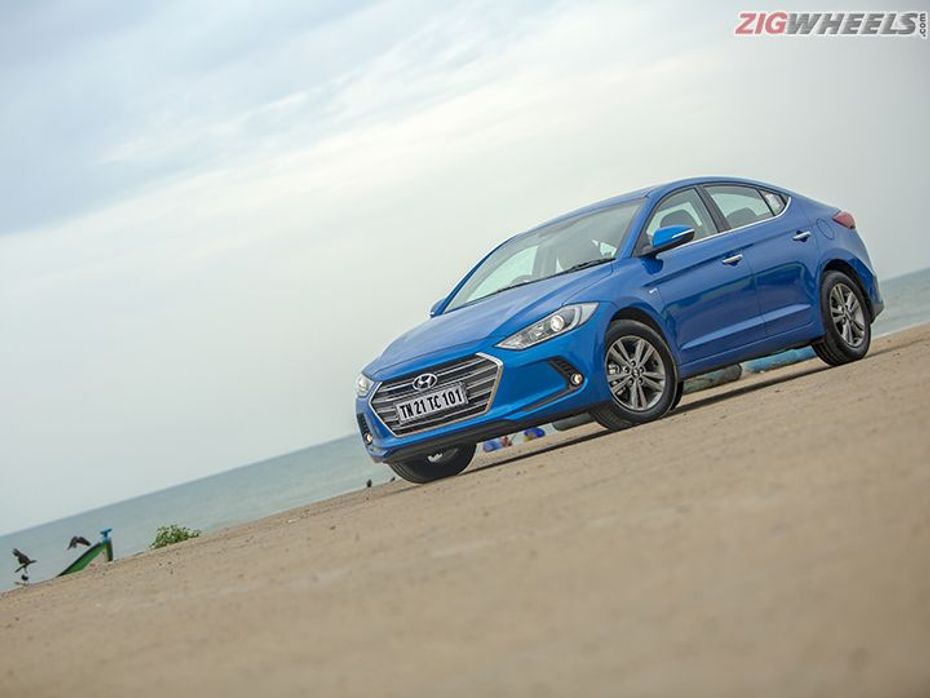
Verdict:
The Hyundai Elantra has further improved its value for money proposition, has better quality interiors, added a few more features to its exhaustive list and is now also offered with a new and larger petrol engine. It might not be as engaging to drive as its European counterparts but that’s not been this segment’s forte anyway. So if you’re looking for a large comfortable sedan, with widespread service network and low running costs you might consider dropping by a Hyundai showroom close to your home.
 Maruti Ciaz
Maruti Ciaz
India's largest automotive community
 Hyundai Creta Electric: Things You Get With Each Of Its 6 Variants
Hyundai Creta Electric: Things You Get With Each Of Its 6 Variants
 Here Are Some Adrenaline Pumping Experiences From Auto Expo 2025 That You Should Not Miss!
Here Are Some Adrenaline Pumping Experiences From Auto Expo 2025 That You Should Not Miss!
 All You Need To Know About The Surprise Element At Auto Expo 2025: BMW iX1 LWB
All You Need To Know About The Surprise Element At Auto Expo 2025: BMW iX1 LWB
 Hyundai Creta Electric Reaches Dealerships, Here’s A List Of Its Pros And Cons Before You Check It Out!
Hyundai Creta Electric Reaches Dealerships, Here’s A List Of Its Pros And Cons Before You Check It Out!
 Hyundai Creta
Rs. 11.10 Lakh
Hyundai Creta
Rs. 11.10 Lakh
 Hyundai Venue
Rs. 7.94 Lakh
Hyundai Venue
Rs. 7.94 Lakh
 Hyundai Verna
Rs. 11.07 Lakh
Hyundai Verna
Rs. 11.07 Lakh
 Hyundai i20
Rs. 7.04 Lakh
Hyundai i20
Rs. 7.04 Lakh
 Hyundai Creta Electric
Rs. 17.99 Lakh
Hyundai Creta Electric
Rs. 17.99 Lakh
 Land Rover Range Rover
Rs. 2.36 Crore
Land Rover Range Rover
Rs. 2.36 Crore
 Volvo XC90
Rs. 1.00 Crore
Volvo XC90
Rs. 1.00 Crore
 Mercedes-Benz GLA
Rs. 50.80 Lakh
Mercedes-Benz GLA
Rs. 50.80 Lakh
 Toyota Vellfire
Rs. 1.22 Crore
Toyota Vellfire
Rs. 1.22 Crore
 Porsche 911
Rs. 1.98 Crore
Porsche 911
Rs. 1.98 Crore